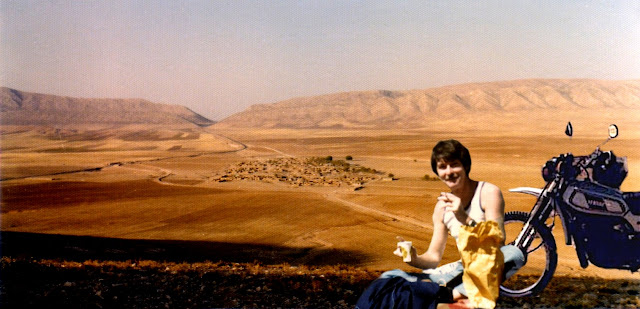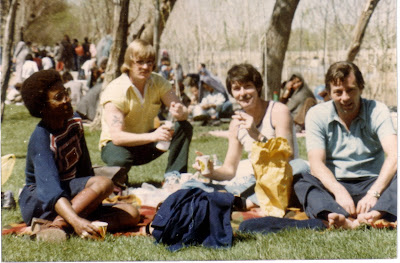We returned from doing the tourist thing in and around Hamadan sometime in the afternoon. My student's family planned to honor their “special guest” with a traditional Iranian feast for such occasions and had asked us to return early enough so that they could “prepare” for it.
I was ushered into the living area of the house for refreshments which consisted basically of tea and fruit. I can still see in my mind's eye the baskets of golden fruit on a low table surrounding a red vase of flowers.
I put my camera on the table next to the baskets of fruit and chatted with family members while sipping tea and munching on an apple. Soon, the men disappeared into the courtyard of the house. I sat around still sipping my tea, munching on the fruit (maybe grapes by now) making polite small talk with the ladies. It wasn't any deep philosophical, and certainly not political, discussion since they spoke no English and my Farsi was rudimentary at best. I was soon rescued by my student who asked me to come into the garden with my camera. I jumped at the chance to escape from the somewhat awkward language problem.
The men of the family were there holding down a bleating frightened-looking sheep. The sheep, it turned out, was to be the main course in the traditional feast in my honor. I must have instantly lost my desert tan and turned several shades of pale for any number of reasons having to do with culinary preferences, but the most shocking element of this whole scene was that they wanted ME to take a bloody picture while they cut the struggling sheep's throat. Aghast and horrified I stammered that I couldn't possibly take such a picture and showed my student how to use the camera while I almost ran back inside the house.
I sat there alone in utter silence (the women of the house had disappeared) praying that the deed would be done as quickly as possible and wondering how I could possibly eat the roast lamb without losing both face and the meat in front of everyone who had been so welcoming to me. Of course (as you may have surmised by now), slaughtering and roasting a fresh lamb is the highest form of honor you can pay an important guest in Iran.
Within minutes my grinning student (holding the rear legs of the sheep looking at the camera in the photo below) came back with the camera apologizing that he couldn't make it work. It was a somewhat complex SLR camera for a novice to use. So, I looked at him, laughed (hysterically, I suppose), took the camera and said: “What the hell!” to myself. Out we went and they proceeded with the slaughtering of the lamb and I took one of the most remarkable pictures I have ever taken. Oh, and yes, the fresh roast lamb was out of this world (as the lamb now was), and no, I didn't disgrace myself.
the slaughtering of the lamb
To be continued...












